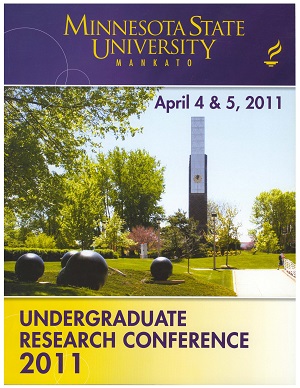Event Title
Does Financial Aid Help Reduce Crime Rate?
Location
CSU 201
Start Date
5-4-2011 11:00 AM
End Date
5-4-2011 12:30 PM
Student's Major
Economics
Student's College
Social and Behavioral Sciences
Mentor's Name
Ihsuan Li
Mentor's Department
Economics
Mentor's College
Social and Behavioral Sciences
Description
According to a report released by the Education Department‘s National Center for Education Statistics, sixty- six percent of undergraduates received some type of student aid during the 2007-8 academic year. Overall fifty-two percent of students received grants, at an average of $4,900. As widely known, an individual with higher education level tends to have a higher wage rate. Previous work on the effectiveness of financial aid focused on individuals‘ drop out decision. This paper sought to establish the relationship between federal/state financial aid and the crime rate in each of the 50 states. Using state level data set, I tested if financial aid played a role of positive externality to reduce crime rate as well. Econometric models were developed to analyze the relationship between independent variables including financial aid, the number of police, race, household median income, and unemployment rate and dependent variables, violent, property and white-collar crime rate. Preliminary results showed that financial aid has a moderate significance in reducing the violent crime rate but not on property or the white-collar crime rate.
Does Financial Aid Help Reduce Crime Rate?
CSU 201
According to a report released by the Education Department‘s National Center for Education Statistics, sixty- six percent of undergraduates received some type of student aid during the 2007-8 academic year. Overall fifty-two percent of students received grants, at an average of $4,900. As widely known, an individual with higher education level tends to have a higher wage rate. Previous work on the effectiveness of financial aid focused on individuals‘ drop out decision. This paper sought to establish the relationship between federal/state financial aid and the crime rate in each of the 50 states. Using state level data set, I tested if financial aid played a role of positive externality to reduce crime rate as well. Econometric models were developed to analyze the relationship between independent variables including financial aid, the number of police, race, household median income, and unemployment rate and dependent variables, violent, property and white-collar crime rate. Preliminary results showed that financial aid has a moderate significance in reducing the violent crime rate but not on property or the white-collar crime rate.
Recommended Citation
Park, Yuyoung. "Does Financial Aid Help Reduce Crime Rate?." Undergraduate Research Symposium, Mankato, MN, April 5, 2011.
https://cornerstone.lib.mnsu.edu/urs/2011/oral-session-13/3



